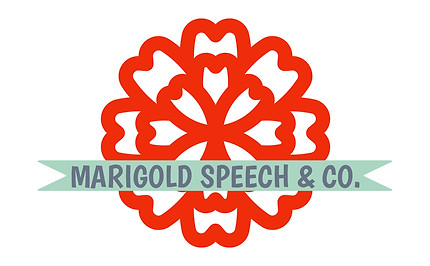
June is Aphasia Awareness Month
- Lauren Hatchett
- Jun 6
- 3 min read
Understanding Aphasia: Types, Symptoms, and Awareness This June
June is Aphasia Awareness Month, a time dedicated to educating the public about a language disorder that affects over 2 million Americans. Aphasia is more common than Parkinson’s Disease, cerebral palsy, or muscular dystrophy, yet public awareness remains remarkably low. By increasing understanding, we can help reduce stigma, promote earlier diagnosis, and support individuals and families navigating this complex condition.
What Is Aphasia?
Aphasia is a communication disorder caused by damage to the language-dominant areas of the brain, most often in the left hemisphere. It affects a person’s ability to speak, understand, read, or write, while intelligence typically remains intact. Aphasia is most commonly the result of a stroke, but it can also arise from traumatic brain injury, brain tumors, infections, or neurodegenerative diseases.
What Are the Different Types of Aphasia?
There are many types of aphasia, each with distinct characteristics. This blog highlights five of the more commonly recognized forms, but several others exist. A speech-language pathologist (SLP) can evaluate and diagnose the specific type of aphasia. Understanding the differences can guide effective therapy planning and help set realistic goals for communication recovery.
1.
Broca’s Aphasia (Non-fluent Aphasia)
Difficulty producing speech
Speech is effortful and limited to short phrases
Comprehension is often preserved
Example: “Walk… dog… park.”
2.
Wernicke’s Aphasia (Fluent Aphasia)
Speech is fluent but often lacks meaning or includes made-up words
Poor auditory comprehension
Individuals may not be aware of their errors
3.
Global Aphasia
Severe impairment in both expressive and receptive language
Often seen immediately after a large stroke
Communication may be limited to gestures or facial expressions
4.
Anomic Aphasia
Word-finding difficulty is the primary issue
Speech is fluent and grammatically correct but includes pauses or vague descriptions
Reading and writing may also be affected
5.
Primary Progressive Aphasia (PPA)
A neurodegenerative condition that gradually impairs language
Not caused by stroke or injury
Subtypes include semantic, nonfluent/agrammatic, and logopenic PPA
Common Symptoms of Aphasia
Trouble naming objects, people, or places (anomia)
Difficulty forming complete sentences
Substituting incorrect words or sounds (paraphasias)
Difficulty understanding speech or written words
Reading and writing impairments
Famous People with Aphasia
Bringing awareness to public figures with aphasia can help reduce stigma and normalize the conversation.
1.
Bruce Willis
In 2022, actor Bruce Willis’s family publicly shared his diagnosis of aphasia, which led to his retirement from acting. Later, it was revealed he has frontotemporal dementia (FTD) with progressive aphasia—a reminder that aphasia can be linked to degenerative conditions.
2.
Gabby Giffords
Former U.S. Representative Gabby Giffords acquired aphasia after a traumatic brain injury from an assassination attempt in 2011. She has become a powerful advocate for brain injury recovery and aphasia awareness.
3.
Ralph Waldo Emerson
The famous writer and philosopher is believed to have had aphasia later in life, with reports of his increasing difficulty with word-finding and expression.
Why Aphasia Awareness Month Matters
Despite its prevalence, many people have never heard of aphasia until it affects someone they love. According to the National Aphasia Association, over 84.5% of Americans have never heard the term “aphasia” (NAA, 2023). Raising awareness is essential for early intervention, support services, and funding for research.
How You Can Help
Share resources and facts on social media using #AphasiaAwareness
Advocate for inclusive communication practices
Support organizations such as the National Aphasia Association, Aphasia Access, and local speech-language pathology clinics
Learn how to communicate effectively with someone who has aphasia: be patient, use simple language, and encourage all forms of expression
Final Thoughts
Aphasia is a language disorder, not a loss of intelligence. With the right speech therapy and support, many individuals with aphasia can improve their communication skills and maintain meaningful connections. This June, let’s elevate the conversation around aphasia and stand with those affected by it.
🔗 Resources:
📚 References:
National Aphasia Association. (2023). Aphasia FAQs. https://www.aphasia.org/aphasia-faqs/
Mayo Clinic. (2023). Aphasia - Symptoms and Causes. https://www.mayoclinic.org/diseases-conditions/aphasia
American Speech-Language-Hearing Association. (2024). Types of Aphasia. https://www.asha.org/public/speech/disorders/Aphasia/
National Institute on Deafness and Other Communication Disorders. (2024). Aphasia. https://www.nidcd.nih.gov/health/aphasia


Comments